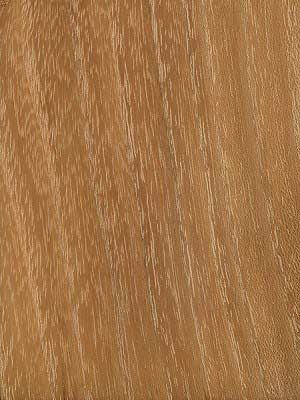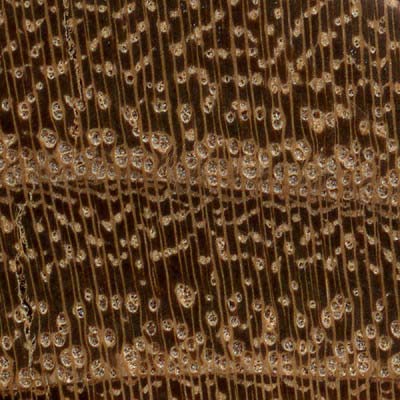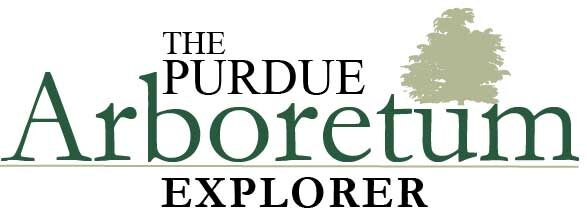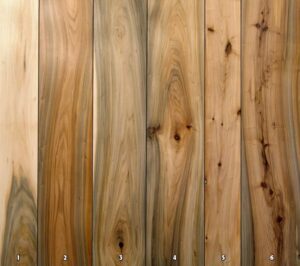Robinia pseudoacacia
Summary
Black locust has a history of being used in fence posts and railroad ties before the advent of modern wood preservation.
Black locust ranges from greenish-yellow to dark brown when first cut. This wood is very resistant to decay and does not
have a rating for steam bending.
Looking at the panels from left to right, Board 1 shows a characteristic flat sawn appearance of the wood. Board 2 and
Board 3 show the white sapwood on each edge of the piece. Board 4 shows characteristic tight knots. Board 5 shows a
quartered surface and dark section in the center, which may be the result of damage near the heart of the tree.
History
Black locust was extensively planted for fence posts and railroad ties, especially before the advent of modern wood
preservation and treatment processes were born. Black locust has also been used for medicinal purposes and its flowers
used to create a perfume jam.
Color & Texture
Black locust’s sapwood is yellowish and narrow on older trees. The
heartwood ranges from greenish yellow to dark brown when first cut. The wood is without odor or taste, and the
heartwood’s pores are completely filled with tyloses and extractives.
Anatomical and Microscopy


Ring-porous; large earlywood pores 2-3 pores wide, small latewood pores in clusters and tangential bands; tyloses
extremely abundant; growth rings distinct; narrow to medium rays barely visible without lens, spacing normal; parenchyma
vasicentric, lozenge, and confluent.
Wood Properties
- Workability
- No specific information is given but due to its high density, it should machine well. Notoriously difficult to
nail and fasten with screws unless pilot holes are drilled. - Strength
- Strength compares to hickory and exceeds oak; strong dense wood
- Steam Bending
- Not yet rated
- Drying
- A mild kiln schedule must be used
- Shrinkage
- Low shrinkage
- Decay
- Heartwood is rated as resistant to very resistant to decay
Products
Black locust was extensively planted for fence posts and railroad ties usage, especially before the advent of modern
wood preservation and treatment processes. Black locust is also planted for erosion control. Being a legume, black locust has improved the soil by utilizing nitrogen fixation to improve crops/soil conditions. Black locust has also been used for fuel wood, electrical insulator pins, tree nails in ships, posts, mine timbers, and frames.

